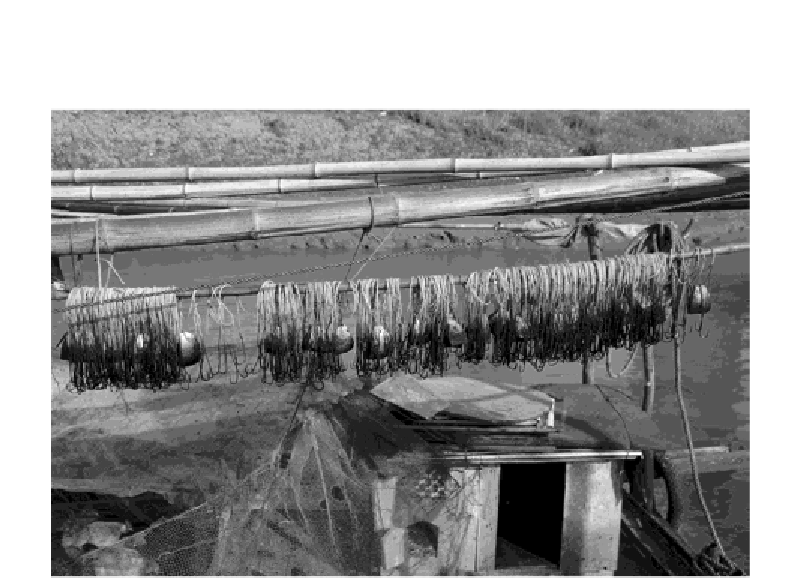Biology Reference
In-Depth Information
ceased during the twentieth century (Zhou et al., 1995), so that unlike most historical-era
extinctions of large-bodied vertebrates, the baiji was instead the victim of incidental mortality
resulting from uncontrolled destructive fishing and habitat degradation.
Figure 3. Rolling hook long-lines used by fishermen at Hexiao harbour, Nanjing, photographed by the
author in March 2008.
Baiji have not been seen in the Qiantang River since the 1950s, following construction of
the Xinanjiang Dam (Zhou et al., 1977; Zhou & Zhang, 1991; Smith et al., 2000), and have
apparently not been seen in either Dongting or Poyang Lake since the late 1970s (Yang et al.,
2000; Fang et al., 2006). Chinese researchers reported a steady, rapid decline of the baiji
population in the main Yangtze channel through the 1980s and 1990s from an estimated 400
individuals in 1979 (Zhou, 1982; Chen & Hua, 1989; Zhou & Li, 1989; Zhou et al., 1994,
1998), with an apparent range contraction of several hundred kilometers from the former
upstream limit of its distribution during this period (Zhou et al., 1977; Chen et al., 1997).
Surveys during 1997-1999 provided a minimum estimate of only 13 surviving animals
(Zhang et al., 2003). The last verified baiji reports are of a pregnant female found stranded at
Zhenjiang in November 2001, and an individual photographed in the Tongling river section in
May 2002. Subsequent unverified sighting reports suggested that a remnant baiji population
continued to persist in the river (Braulik et al., 2005). However, an intensive six-week multi-
vessel visual and acoustic survey in 2006 that covered the entire historical range of the baiji in
the main Yangtze channel failed to find any evidence that the species survives (Barrett et al.,
2006; K. Wang et al., 2006; Turvey et al., 2007), and the baiji is now highly likely to be
extinct. This represents not only the first documented global extinction of a ‗megafaunal'
vertebrate for over 50 years, but also the disappearance of an entire mammal family
(Lipotidae), only the fourth such event in the past 500 years (MacPhee & Flemming, 1999;
Isaac et al., 2007). Furthermore, this is the first probable extinction of a large-bodied
vertebrate species since the emergence of an international network of conservation


Search WWH ::

Custom Search